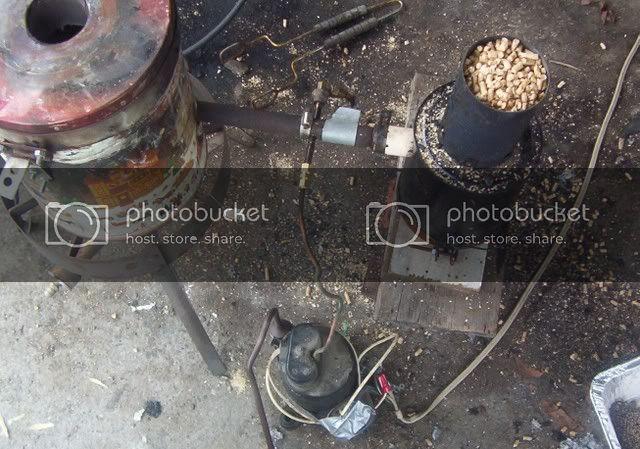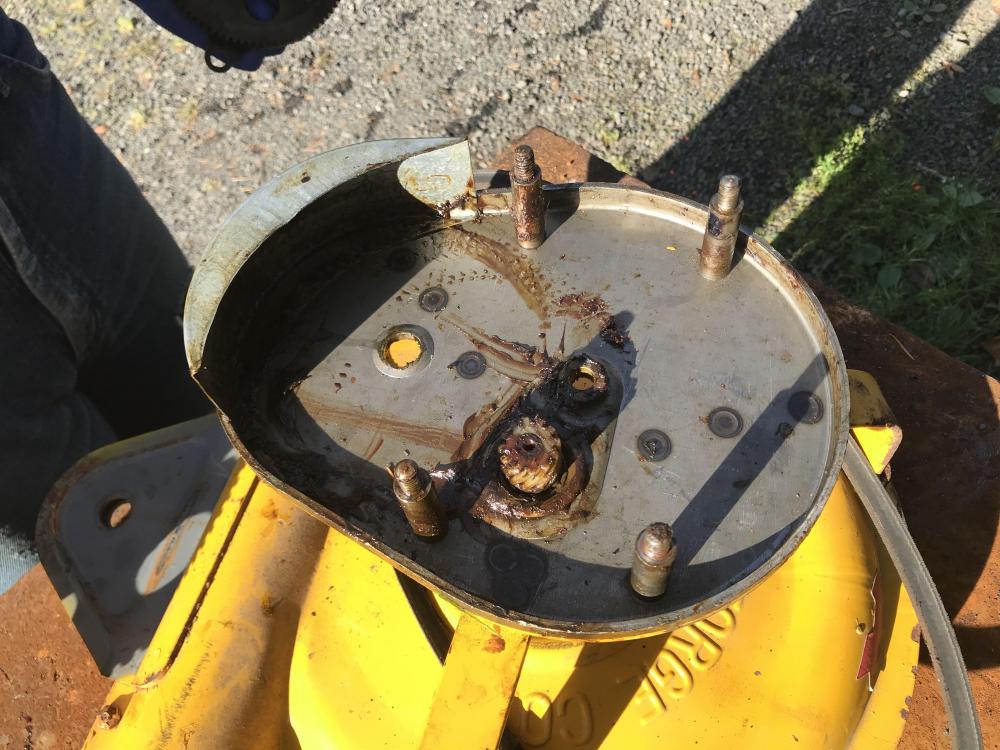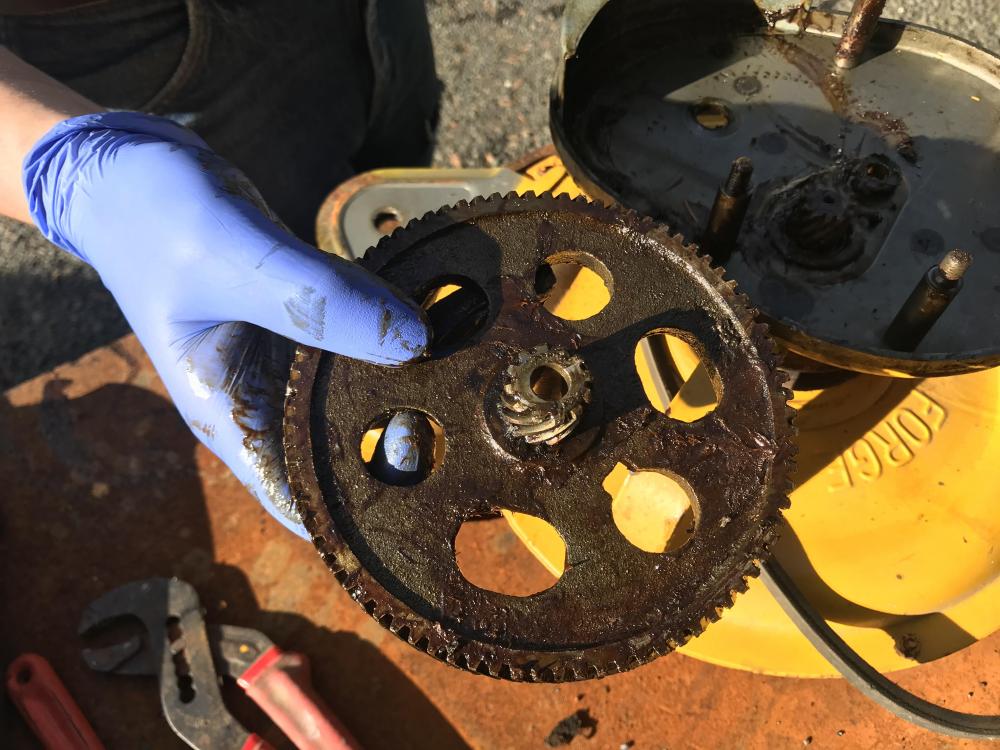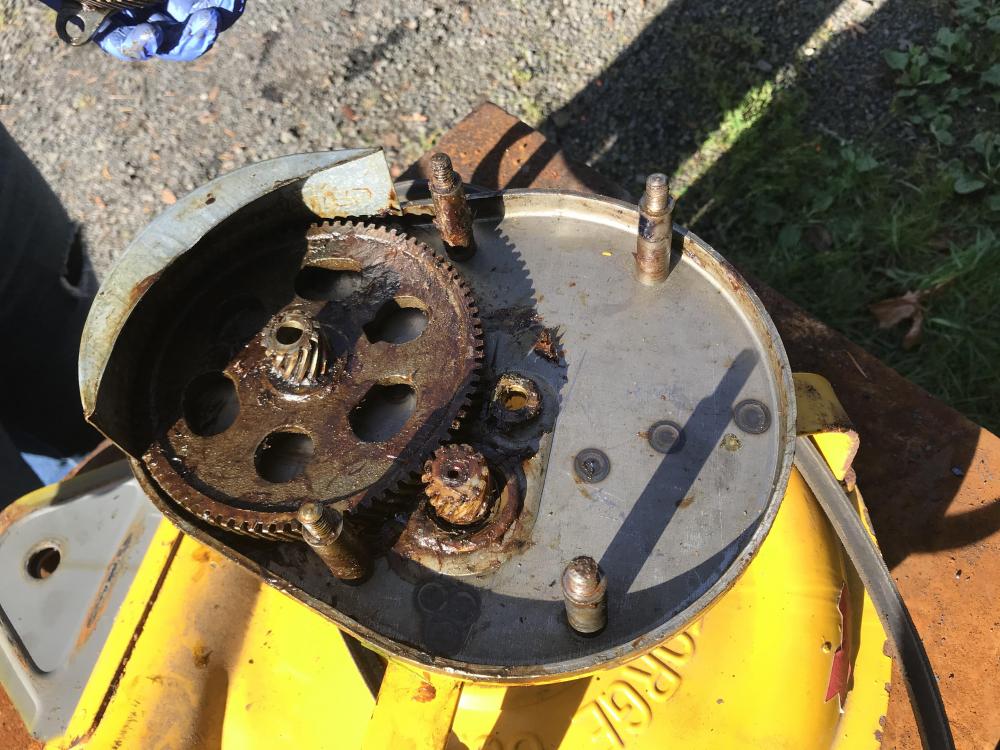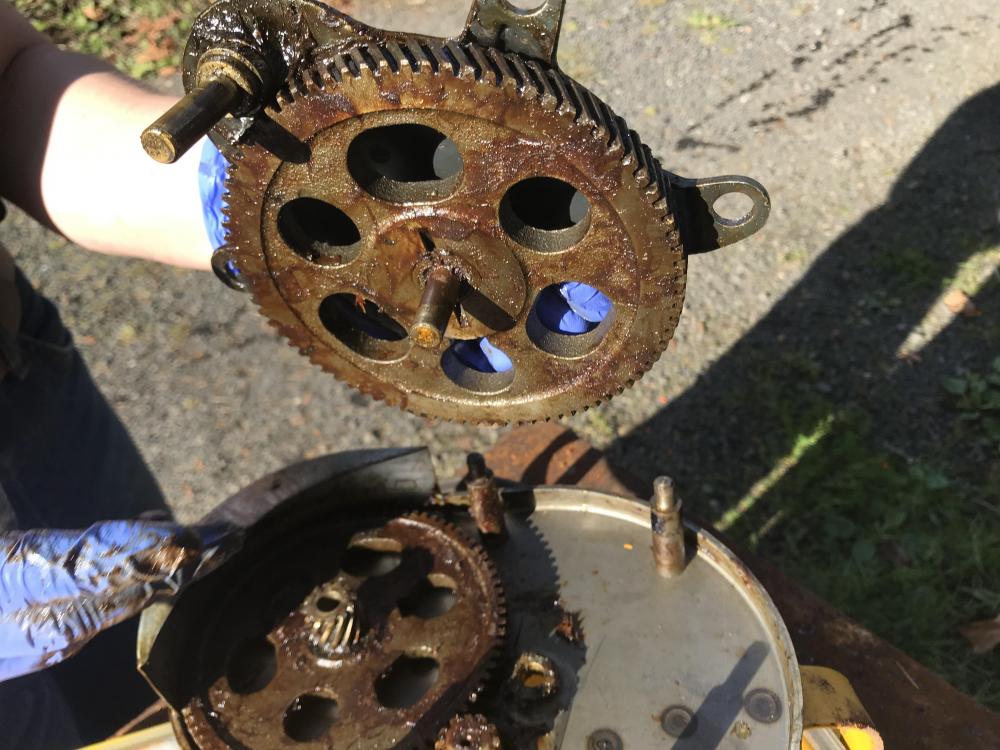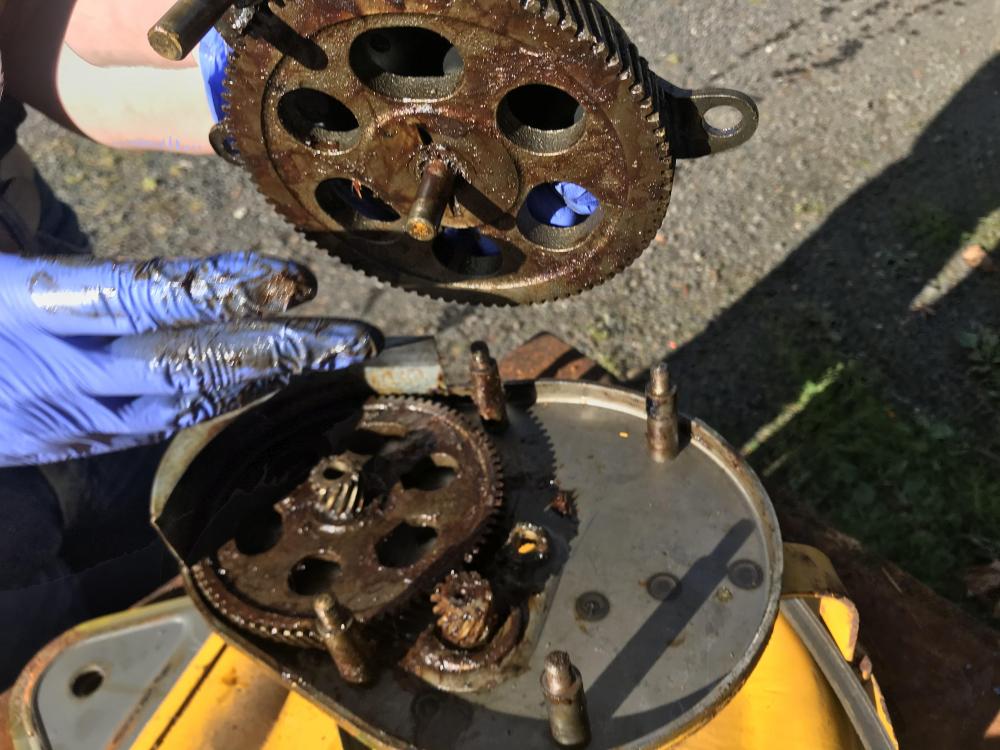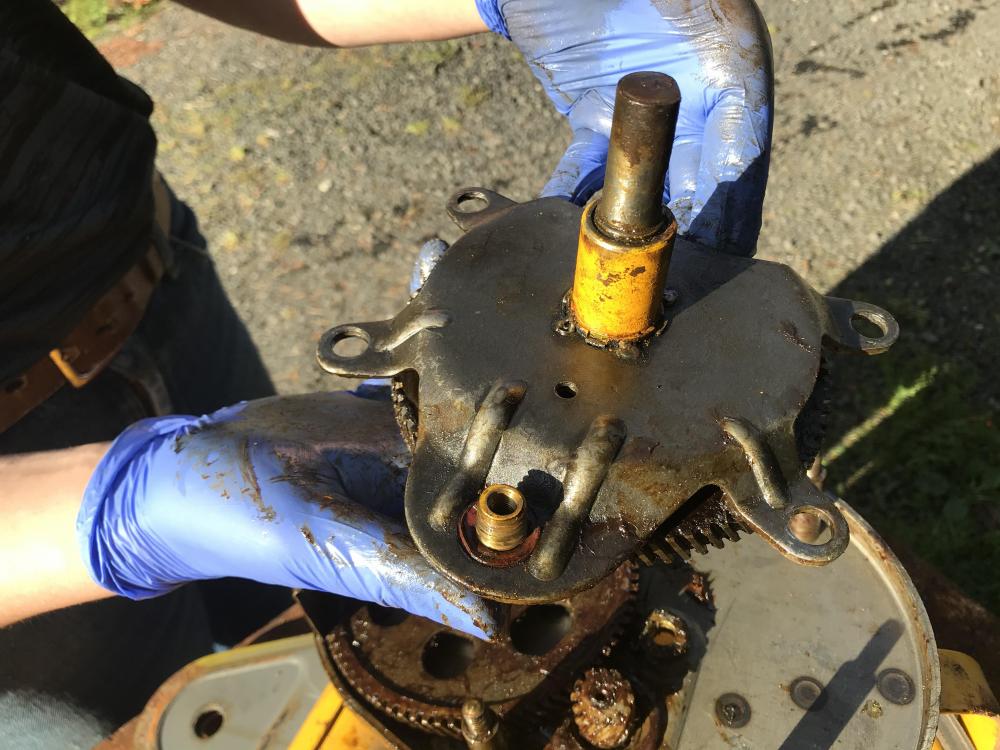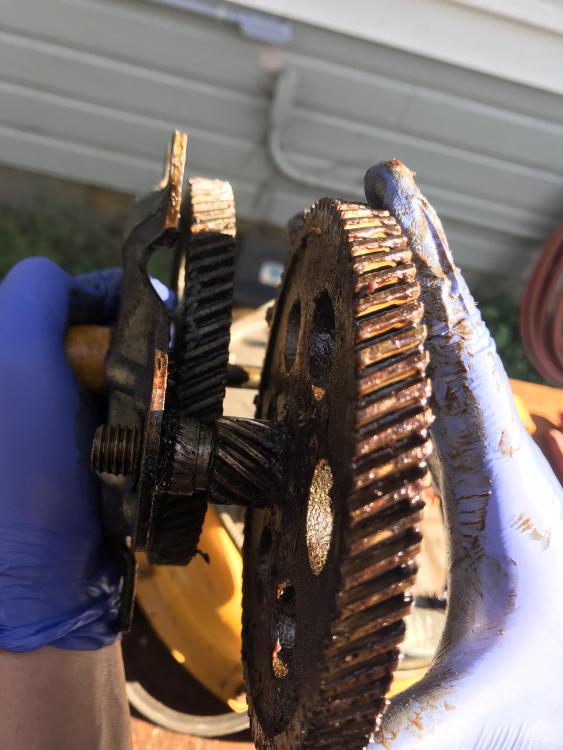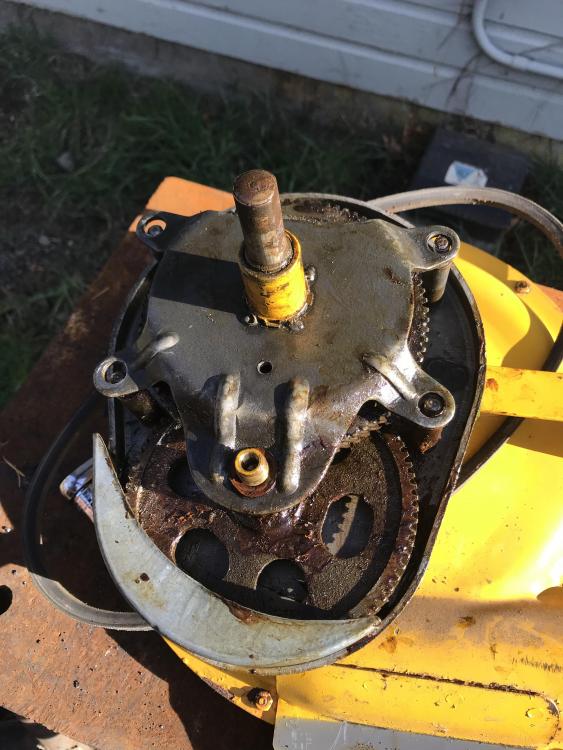
Willem
Members-
Posts
24 -
Joined
-
Last visited
Contact Methods
-
MSN
willemdebate@gmail.com
Profile Information
-
Location
Chehalis Washington
Recent Profile Visitors
The recent visitors block is disabled and is not being shown to other users.
-
So it would be optimal to encase all sides of the refractory that aren't facing the forge in a sheet metal box or angle iron frame and then attach a hook from there?
-
Latticino, I have given forge doors some thought in passing as I use the poor mans forge door (just a couple firebricks). My initial thought would be to caste a hook and mesh into some refractory much like is done with concrete pads. This way the hook would have something to attach to that would "bite" into the refractory while also giving the refractory some additional rigidity. I've had a number of firebricks break from dropping them much to my distress. I'll look into prototyping something once I build my new forge. (waiting on a 220 circuit to be reinstalled into the barn). As I'm thinking about it, is there a way to amplify the stroke distance of a foot petal so that if it moves a linear 4 inches it can pull the wire attached to the forge door 8 inches? In all honesty I'm not that familiar with pulley systems or classical mechanics. When you reference burner design to fit the size of space are referring to the size of the burner? All the ribbon burners I've looked at have the same fundamental design however the number of orifices are scaled to meet the size of the space heated. In which case I'm using a 6"x3" burner which to my understanding should be about right for a 20# propane tank forge. I've also seen someone who has managed to create a narb burner that runs of 1/2 psi. His video of doing it all wasn't the most refined so I plan to reach out to him (its on youtube) and see if he has any updates on how it works. He actually retrofitted a multi-port burner to be na which is interesting because it circumvented (for good or for bad) Frosty's method of feeding the GA mixture perpendicular to the burner holes. I think the question is how hot can it get at 1/2 psi because he didn't show the forge at temp. I'll let someone else do the leg work there...
-
I'll have to check craigslist and fb marketplace. I've looked at them new but they're a pretty penny.
-
Yeah I understand that. My point was only that for all intensive purposes we can get more energy out of a system then we (the humans) had to invest. It doesn't break the laws of thermodynamics because the energy was put there by other means (nature). Although I think we're on the same page on that. You might find this video about frictionless fluids interesting.
-
Irondragon I did do a few google searches before posting I found this which is part of what fueled my enthusiasm, in hindsight I think the title of my post was misleading when I talked about brown gas I meant any gas that is produced from pyrolosis or electrolysis (my excitement caused me to put the cart before the horse so to speak). This image seems to be a working concept from what I understand. The post if fairly old so I have no clue if it was ever refined. But that was my general idea for a forge. After reading about frosty's narb burners I wonder if it could be made to work with one. Although to my understanding it will need higher pressure for the venturi effect and as such needs compressing which is a whole 'nother can of worms. Thomas I have not taken any formal thermodynamics coarse but I am however familiar with the law of conservation of mass (if thats the right one). To my understanding a gassifier or electrolyzer works much like splitting an atom in terms of getting energy. The energy is there to burn we just have to have the proper means of access it. So to apply that understanding to the rules you just outlined we get more usable energy out of say a gassifier then we put in because the energy is stored within the wood and therefore not acessesible to us. It seems like we get more energy out because piece of wood doesn't get very hot however the wood gas that is lit does. In terms of actual forging applications I did hear mention that it is hard to control how reducing the flame is which wood lead me to believe that it is more effective for casting then forging. With all that said I hope that makes enough sense, I'm trying to draw a distinction that I'm having a rather hard time articulating. And don't get me wrong I'm not arguing the laws of thermodynamics! As an interesting side note people have been able to make perpetual motion machines, they just don't break the laws of physics because as soon as resistance is introduced to the system they slow down. This is all done with super-fluids near zero kelvin. For now though Frosty has setting me straight on making a NARB burner, the tinkering will have to wait. Setting aside that tangent and to answer your question about my living situation, I am fortunate enough to still live with my family so I don't have to pay for living expenses. Most of my spare income goes to tools or video games (you didn't hear that from me). I call it a farm partially out of wishful thinking and partially out of habit. Both my parents are city slickers but when they had me they ended up moving to a farm and starting a dairy + creamery. Long story short that business ended up going under because our main buyer shifted their business model but we have managed to hold onto the farm by starting a wedding business. We have a big old barn that's in amazing shape because all it was ever used for previously to us was hay. As a side note we're starting to grow some dahlias to sell via the wedding venue and a cafe we're putting in the ground floor of the barn. I'll definitely look into making fertilizer from our cow dung though, with any luck I'll end up with some gas for the forge too! Your suggestion for an opportunity to make free fertilizer really couldn't have come at a better time. Now all I have to do is convince my pap that its a good idea.
-
Welsh thank you for the kind words, it means a lot. Given what you just said I will defiantly upgrade to a higher volume tank. I actually called my local cenex a while ago and talked to them about the tank freezing issue, however it was as I was first figuring out ribbon burners, at the time I had yet to install a blast gate on the airflow and was having a hard time getting the forge up to temp at 30 psi. When I asked how I could stop my tank from freezing they essentially said I would have to get a massive tank. Well one glued together osb and plywood blast gate later and the forge runs like a beauty. I think if you hadn't pointed this out to me I wouldn't have ever known because I had already researched it (not well enough) and came to the conclusion is was just the way the darned tanks worked, so I owe you big time. -Will
-
Hey frosty, We recently sent about half the herd off to butcher (the story of getting them in that God forsaken trailer is something I'll spare you with) but we still have about 12 head or so left. Honestly I haven't counted lately. I'll definitely look into that methane method of producing fuel. At the very least I'll be able to keep the boots warm in the winter! I appreciate you taking the time to give such a thoughtful response so thank you! I definitely need to rebuild the forge for a multitude of reasons so I'll go look into a narb burner. You did definitely hit the nail on the head though, I do most of my "research" through youtube. I choose to blame it on it being a symptom of my generation, whether or not thats accurate though is another question... I don't mean to beat a dead horse by sharing this but you bringing up your friend and his quest for a brown's gas did make me think of this video https://youtu.be/X3KipK49v7g?t=5704. I don't have enough mechanical know how to tell whether or not he is full of it or not however to my untrained eye it looks legitimate. Again I don't mean to disregard your advice I'm definitely going down the narb route, I just thought you might find this interesting. -Will
-
I would say I'm in the middle of the spectrum. In my mind even if this doesn't work out to be useful for smithing it is still a cool contraption that I was able to learn from by building. I definitively understand the frustration of answering the same question over and over again, I did look around the forum and the one page I found quickly became diverted to a safety discussion because the person was using galvanized metal in his build. As such I couldn't find any comprehensive information on it (which is also why I felt comfortable asking) and that is part of the reason I'm so curious about it. . To me its uncharted territory with potential. However if it doesn't work out I'm more than happy to go use a ribbon burner forge, they really are great little units. I'm 17 taking collage classes through an education arrangement. I spend most of my time either doing school or helping on the farm, and my parents can't really afford to pay me so I work pro bono so to speak. I'll get a chunk of change or a new toy every once in a while when they can afford it. Between those two I don't think I have enough time for a traditional job. In addition I consider doing these projects kind of an investment in my education, so sooner I learn how to say fabricate, weld, or any piece of how the world works the more time I'll have to make a metaphorical profit off of it. Really a return on investment. The sooner one knows how to do electrical the less times they have to pay for an electrician. Thats my mentality anyways. I maybe should have made more clear I have already built a ribbon burner forge following Wayne Coe's instructions however it being my first time applying metal fabrication practices and welding it hasn't turned out too pretty, however it is plenty serviceable and I'm more then capable of forging with it. If it wasn't for it being such a gas hog I would have no desire to build a new forge.
-
I'm definitely going into this knowing its rather uncharted territory, however the worst I end up with is a lesson learned or a working gassifier that just can't power a forge. I'm still in school and especially during the quarantine I have a surplus of time, however I appreciate the warning. Hey Thomas, Yeah I haven't looked into a narb ribbon burner, and I definitely don't plan on compressing the gas. I have some time on my hands and a new mig welder so I'm honestly partially just looking for a project. I completely understand using whats tried and true and I'm sure it is more efficient in the long run however I think there is some value in at least trying out other things. And looking at some simple designs they're just some black iron pipe and scrap metal which doesn't really cost much. At worst I lose a few hours and gain some experience fabricating something interesting. My sense of propane cost is definitely also distorted because my forge is somehow inefficient, as such I only get maybe 4-5 hours out of a 20lb tank despite using a forced air burner. Regardless of this project I will most-likely build a new propane forge soon, once I have a 220 circuit installed for the welder. Would you mind explaining why the old timers would be frustrated with my questions? I tried my best to articulate my idea, granted I'm still new to the forum so I'm not yet familiar with its culture. I maybe should have prefaced this post that I'm still very young and wide-eyed with too much time as well as enthusiasm on my hands which definitely gets me into trouble. Anyways thanks for putting up with me!
-
Its definitely a rough idea. My thought was to use a ribbon burner so a blower won't be an issue anyways. As for controlling gas input I haven't had the oppertunity to test one and see how consistent the gas output is. However assuming it is relatively stable my thought would be to use a t with a valve on one of them so that I can control how much goes into the forge and then the rest will get burned off potentially stored if that is a feasible option. I work outside anyways which is part of the reason I'm avoiding solid fuel. Also I'm partially just having fun with the idea and partially I'm legitimately trying to save myself time and money in the long run.
-
Yeah my thinking wasn't actually to compress any of the output gasses instead feed them directly into a forge. That's my main reason for not using an electrolyzer because compressing the hydrogen and oxygen and it is a pain to separate them. I'm not sure if I'm allowed to link to you tube videos but there people who have run a gassifier straight into a combustion engine. I would do similar but into a ribbon burner (maybe naturally aspirated?). I don't have a covered shop so I can't really use solid fuel as I'm in Washington and we get rain every other day. In addition I like the freedom of not having to manage a fire (specifically not having to worry about things burning up). I've also only ever used gas forges and while I would like to build a solid fuel forge at some point, not until I've developed most of my tooling and such. In short I prefer the convenience of a gas forge.
-
Hey All, I've done a bit of reading into electrolysis and gassifiers for a more cost effective way to forge. Since the main cost of running a forge is the fuel I'm trying to cut down on that, especially being on a limited income. From my relatively limited research I've concluded that a gassifier is much more practical and most-likely safer then electrolysis, however there may be some potential to automate fuel production with electrolysis that a gassifier doesn't have the feasibility of doing. I really like the idea of hooking my forge up to a water line and never having to go out for propane again. Going back on topic, I've done some reading on the forums in regards to gassifiers and it appears that a cleaning system (ie radiator and cyclone containers) aren't nessisary for a gassifier with the intention of powering a forge because water vapor and tar don't matter like they would in a combustion engine. If I do build it I plan to run it off of wood chips because I have about a lifetime supply of them, save them decomposing. However not having prototyped anything yet I would like to hear people's opinions who are a whole lot older and wiser than mine. Is this feasible and if it is what are the obstacles in building and using this contraption that I should be aware of? Thanks -Will
-
I did take it apart because the it took all of my strength to turn the handle. It was either initially made to be used in conjunction with a motor or it was jerry rigged to work with one. Either way the motor could run the blower no problem but it wasn't practical to use it by hand.
-
I have a forge blower that has gets that don’t track properly. The larger There is a total of 4 gears. 1 large gear from turn crank, 2 small transition gear, 3 small turn gear, 4 small gear to fan. If you can tell from the pictures the transition gear only mates against the large turn crank gear about an 1/8 of an inch. In addition the apparatus of the large gear won’t sit flush in on the four posts. It may be that a baring is missing that holds the small gear up higher so it mates against the large gear. I’ve tried to include enough pictures to give y’all a good idea of how it should work. Any advice is appreciated. -Will
-
It's a gas engine that is "not working" specifically i dont know whats wrong with it. I havent actually opened up the cylinder but all the ports were left open and when I took it by my local welding shop the guy said that the interior of it was most likely rusted out. When I get home I'll probably give it a go and see how bad it really is, but in all reality I think i have a nice big I beam and some junk.
